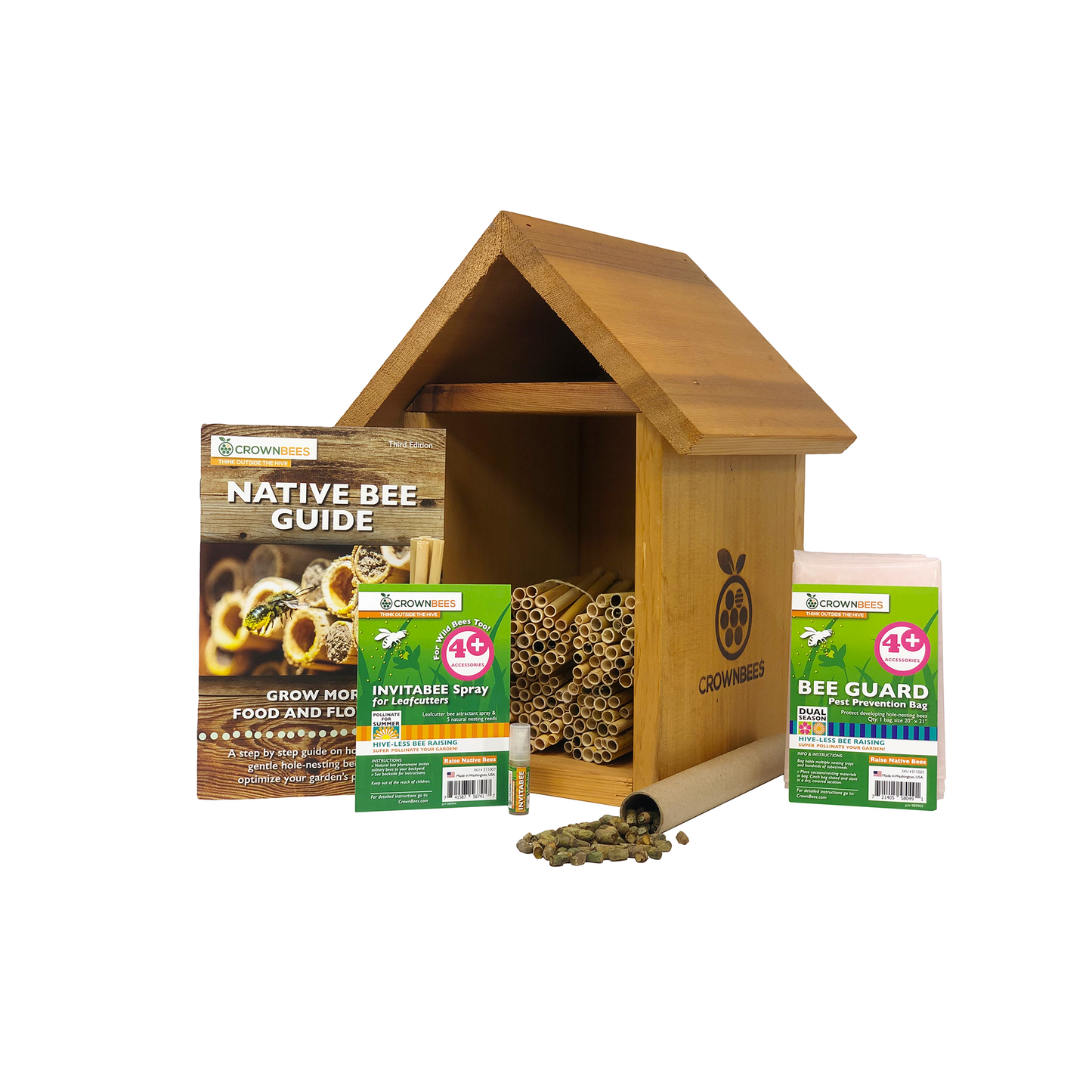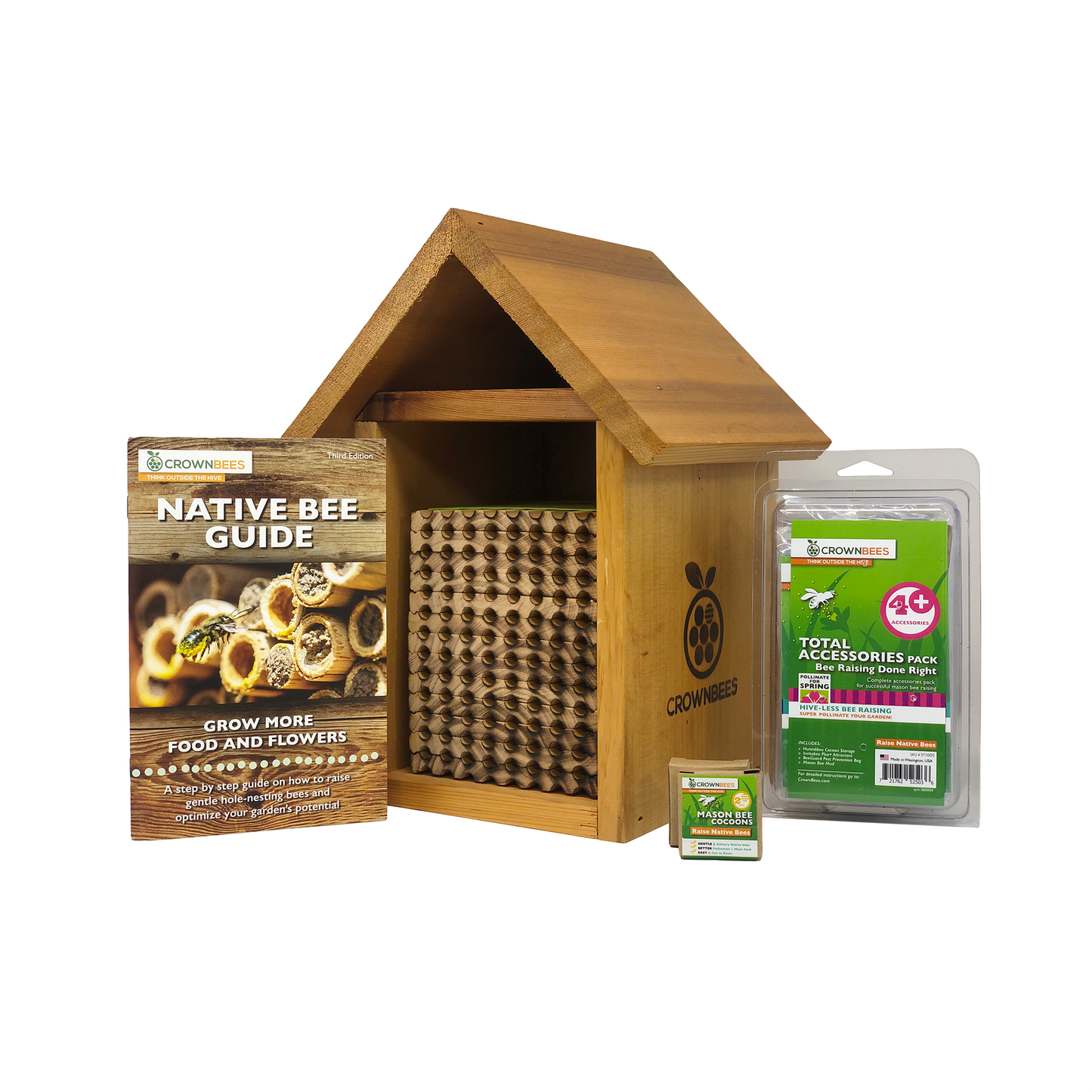
The single most destructive disease of cavity-nesting bees is the fungal pathogen called chalkbrood. Chalkbrood spreads throughout the nest when healthy bees walk through an infected nesting chamber. Check out Parasites and Diseases of Mason Bees to learn more about Chalkbrood.
What You Can Do: The most effective control method is to harvest and clean your mason bee cocoons in the fall and provide clean nesting materials each season.
Many online resources suggest washing mason bee cocoons with cool water and a mild bleach solution (1:3 by volume) to clean your cocoons and nesting materials of Chalkbrood. While this chemical-based approach is effective when done correctly, we wanted to find a less toxic, more bee-friendly solution. So, we partnered with BrioTech, a local Woodinville, WA company that created the only stable form of HOCl, to help us create the bee-formulated solution, CleanBee™.
A lot of people have asked us what makes our CleanBee™ a safer alternative to bleach.
The active ingredient in our CleanBee™ is Hypochlorous acid (HOCl). HOCl is a weak acid that occurs naturally in our body and, as it turns out, is the perfect weapon to fight Chalkbrood. It effectively kills fungal pathogens, yet this powerful weapon is chemical-free, non-toxic, and all-natural, making it safe to use around kids, pets, and of course - BEES! That's an impressive combination.
Fun Fact: HOCl is now used in everyday settings, including daycare centers, hospitals, and even produce sections in grocery stores!
Bleach is in the same chlorine family as HOCl. Research shows that they both kill bacteria, fungus, spores, and viruses. However, bleach can be highly irritating to the eyes, skin, and lungs. In contrast, HOCl has a temporary and mild chlorine smell that dissipates quickly, it is non-irritating, and it does not have adverse side effects.
Since bees are often deterred from nesting in areas with heavy chemical scents, using CleanBee™ instead of bleach to clean reusable wood trays of Chalkbrood will keep the bees coming back year after year!
Instructions for Mason Bee Cocoons:
- Clean the cocoons by thoroughly washing them in cool water. Gently pat them dry and spray CleanBee™ directly on mason bee cocoons. A light mist, evenly on all sides, is all you'll need!
- Do not use CleanBee™ as a replacement for washing cocoons. CleanBee™ is a post-washing supplement to help with Chalkbrood and mold.
- If you notice excessive mold growth (a little is OK) in your HumidiBee or on mason bee cocoons during winter storage, you can re-wash cocoons in cool water, pat dry, and spritz with CleanBee™ to treat mold growth. Rinse the HumidiBee™ pads in warm, soapy water, let dry, then evenly spritz CleanBee™ on both sides of the HumidiBee™ pads and mason bee cocoons.
- Store CleanBee™ in a cool, dark location for optimal shelf life. CleanBee™ has a shelf life of about three years. After three years, its effectiveness may have reduced, and you'll want to replace it with a new bottle.
Instructions for Reusable Wood Trays:
- During bee cocoon harvest, lightly apply CleanBee™ only to areas impacted with Chalkbrood. Carefully remove the chalkbrood spores and spritz both top and bottom trays where the spore touched both wood surfaces. Work the liquid into the wood with your fingers.
- Store CleanBee™ in a cool, dark location for optimal shelf life. CleanBee™ has a shelf life of about three years. After three years, its effectiveness may have reduced, and you'll want to replace it with a new bottle.
Pro Tip: A little goes a long way! Only apply a light mist of CleanBee™ to visibly affected areas to extend the bottle's life.
SHOP WOOD TRAYS FOR MASON BEES


